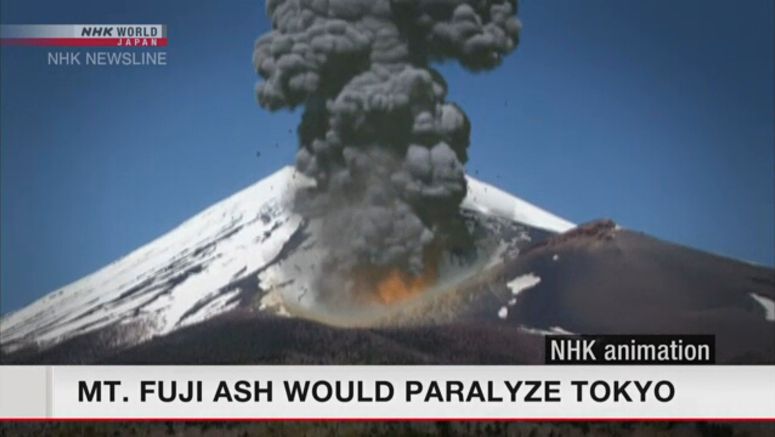Panel: Mt.fuji Ash Would Paralyze Tokyo

A Japanese government panel says Tokyo would become unable to function as the country's capital in about three hours if a large-scale eruption of Mount Fuji were to occur.
When Mount Fuji last erupted in December 1707, it spewed ash for more than two weeks. Several centimeters accumulated in the city of Edo, which later became Tokyo.
The government panel simulated what would happen if an eruption of that scale were to occur today, covering the greater Tokyo area with volcanic ash.
It found that the ash would likely reach central Tokyo and the neighboring prefectures of Kanagawa, Chiba and Saitama just three hours after the eruption.
All railway services would stop, as even a very small amount of ash would cause the operating system to malfunction.
In addition, poor visibility would disrupt auto traffic, limiting people's movement and halting commuters.
Logistics would be disturbed, possibly resulting in shortages of food and water.
If it were to rain, volcanic ash could stick to power supply facilities and cause a blackout in central Tokyo.
Communication and water supply systems could also be rendered useless.
The panel's chief examiner, Fujii Toshitsugu, a professor emeritus at the University of Tokyo, says it's difficult to predict an eruption and its aftermath.
Fujii says the capital city, particularly its transportation networks, would become unable to function after an eruption and people's movement would be stopped.
He says it will be too late to take measures after an eruption, and urges them to be considered in advance.



















